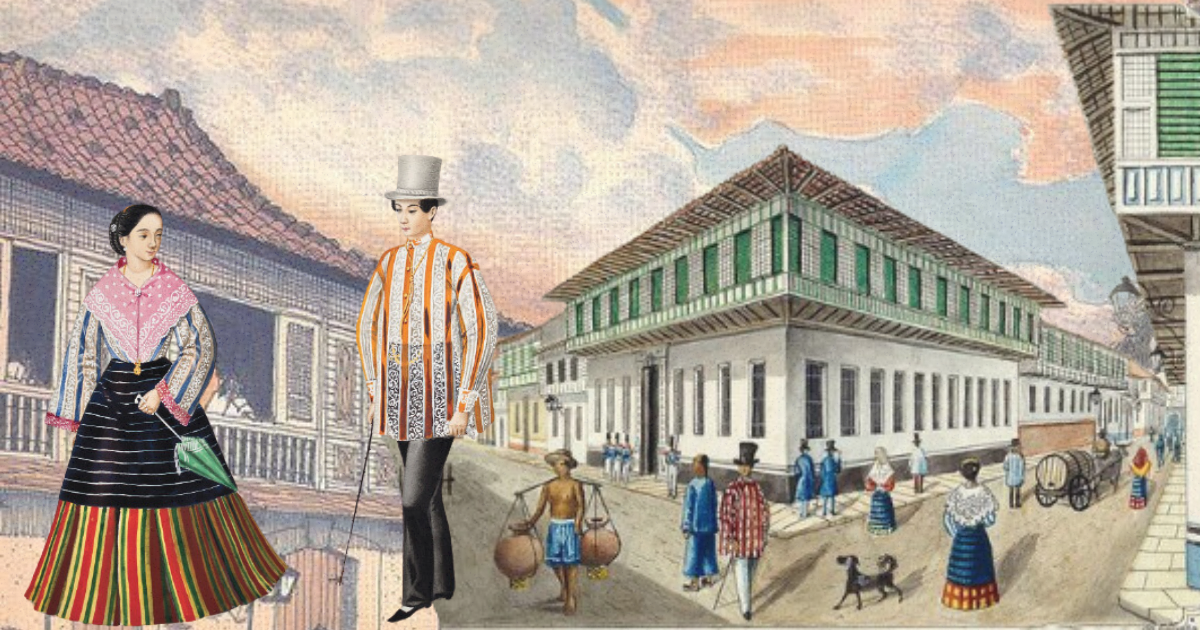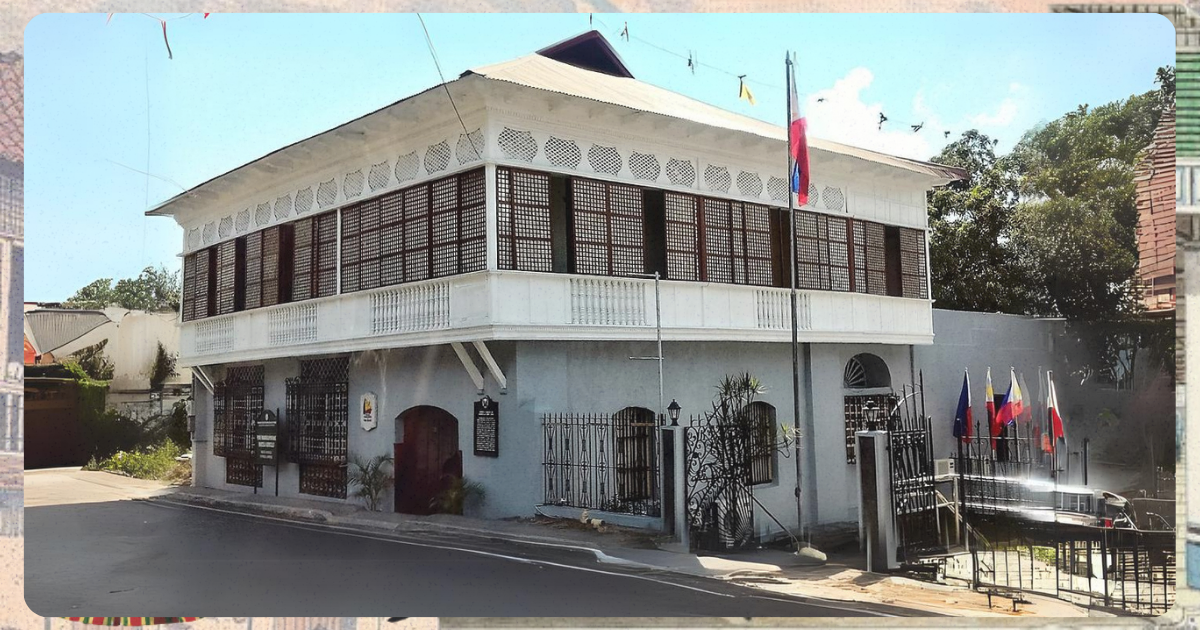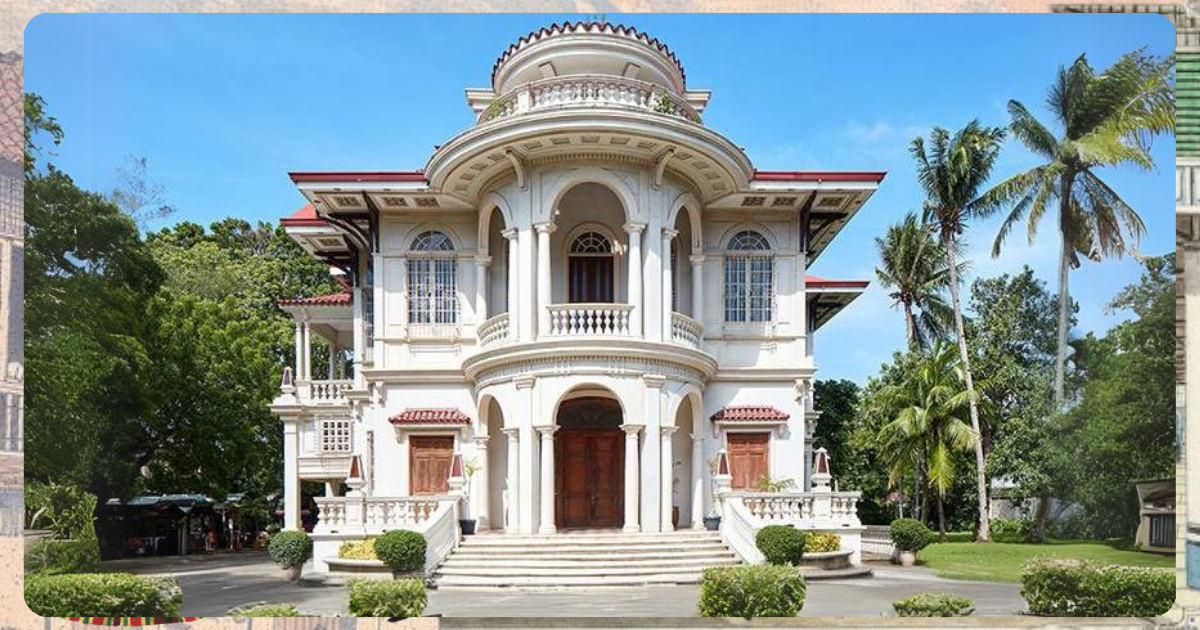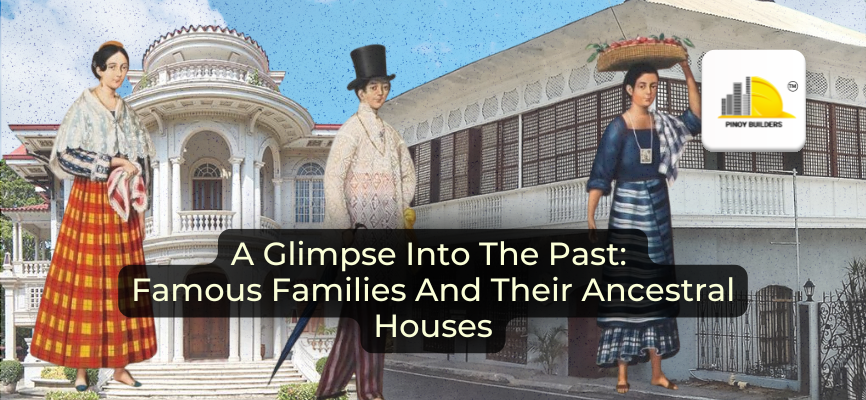Philippine ancestral houses, like those “bahay na bato” residences we see so beautifully preserved in Malabon and Manila hold a special place in the cultural tapestry of the country. These heritage homes are not just architectural marvels but also vessels of history, embodying the rich traditions and familial legacies of generations past. In this article, let’s dive into the cultural significance of ancestral houses, highlighting prominent Filipino families who have taken on the mantle of preserving these cultural treasures.

Popular Ancestral Houses in the Philippines
In the Philippines, several famous personalities have ancestral homes that are as popular as their owners. These homes are not only personal treasures but also part of the national heritage. You can visit many of these houses, as some of them still stand tall and welcome interested guests.
Lazatin House
The Lazatin House, constructed in 1925 by Serafin Lazatin y Ocampo, president of the San Fernando Electric Light & Power Company, and his wife Encarnacion Singian y Torres, is a notable heritage site in San Fernando, Pampanga. During World War II, the Japanese Imperial Army appropriated the house for General Masaharu Homma. After the war, the Lazatin family returned to find much of their furniture destroyed but restored the home to its former grandeur. The house has remained in the family’s care and has been passed down through generations.

Image from Wikipedia
Exemplifying the Bahay na Bato style from the American colonial period, the Lazatin House was declared a Heritage House by the National Historical Institute on January 27, 2003. The designation ensures the house’s exterior remains unchanged, preserving its historical and architectural integrity. Today, it continues to be owned by the Lazatin family, with notable descendant Hannah Lazatin, a former magazine editor who wrote for famous publishing brands such as Town&Country Philippines, Esquire Philippines, and South China Morning Post’s STYLE Magazine.
Agoncillo-Mariño House
The Agoncillo–Mariño House, an exquisite example of Spanish Colonial architecture, is located in Taal, Batangas. Constructed in the 1780s by Don Andrés Mariño, the house is a testament to the era’s craftsmanship. It became notable as the residence of Marcela Mariño de Agoncillo, renowned for creating the Philippine national flag, and her husband, Felipe Agoncillo, the “First Filipino Diplomat.” Their legacy is memorialized here, with the house now recognized as a national shrine under the National Historical Commission of the Philippines (NHCP).

Image from ASEF culture360 – Asia-Europe Foundation
In 1980, Marcela’s daughters, Gregoria and Marcela, donated the house to the government, preserving its historical significance. The Agoncillo–Mariño House was converted into a museum dedicated to Marcela Mariño and Felipe Agoncillo, showcasing family memorabilia. Notably, Ryan Agoncillo, a famous Filipino actor, model, and television host, is a celebrated descendant, linking modern fame with the family’s rich heritage.
Molo Mansion (a.k.a. Yusay-Consing Mansion, originally known as the Lacson-Yusay Mansion)
The Molo Mansion, originally known as the Lacson-Yusay Mansion, was built in 1926 by Doña Petra Lacson and her husband Estanislao Yulo Yusay, a prominent lawyer and judge from Molo, Iloilo. After Estanislao’s death in 1940, the mansion passed to their daughter Rosario Yusay and her husband, Timoteo Consing Sr., who served as Iloilo governor for two terms. The property continued to be a family heirloom until it was acquired by the SM Group in 2014.

Image from Positively Filipino
Architecturally, the Molo Mansion blends neoclassical and Art Deco styles, featuring elegant lines and decorative details. Located in front of Molo Plaza and Molo Church, it now houses several souvenir shops, including Kultura and Sabor Ilonggo, along with coffee shops, serving as a vibrant cultural hub and a testament to the area’s rich heritage.
The Preservation of Architectural Beauties
The architectural beauty of ancestral houses is undeniable. These homes often feature unique elements such as ventanillas (small windows beneath larger windows), wooden balustrades, and azoteas (open terraces). The craftsmanship seen in the intricate wood carvings and sturdy stone foundations showcases the skill of Filipino artisans.
Preserving these homes is no small feat. Restoration projects often require significant financial investment and a deep understanding of traditional building techniques. Restoration projects involved sourcing materials from local artisans to maintain authenticity. Resolving and entirely avoiding termite infestations and modern pollution are done with innovative preservation techniques.
Modern challenges include navigating urban development pressures and adapting these old structures to contemporary living standards without compromising their historical integrity. These efforts are crucial in maintaining the architectural and cultural heritage of the country.
Maintaining Glory: Celebrity Families And Their Ancestral Houses
Ancestral houses in the Philippines are more than just old buildings; they are vital links to the country’s past, filled with historical and emotional significance. Celebrity families like those of Celebrity A and Celebrity B play a pivotal role in preserving these heritage homes, showcasing the intersection of fame and family legacy. Their efforts highlight the architectural beauty and the need for ongoing preservation of these cultural treasures.
As we appreciate the stories and efforts of these families, let us also recognize the importance of preserving our heritage for future generations. Supporting and participating in preservation efforts ensures that these ancestral houses continue to stand as proud testaments to our rich history and cultural identity.
References
Geni. (2024, February 12). Timoteo Yusay Consing (1893 – 1966) – Genealogy. Geni. Retrieved August 8, 2024, from https://www.geni.com/people/Timoteo-Consing/6000000021681328386
Periquet, L. O. (2024, January 21). The houses that sugar built • PhilSTAR Life. Philstar Life. Retrieved August 8, 2024, from https://philstarlife.com/geeky/326087-houses-that-sugar-built
Trailblazer Filipino realtor’s advice: Avoid daydreaming, get out of your comfort zone. (n.d.). Quatar Tribune. https://www.qatar-tribune.com/article/88124/nation/trailblazer-filipino-realtors-advice-avoid-daydreaming-get-out-of-your-comfort-zone
Wikipedia. (n.d.). Molo Mansion. Wikipedia. Retrieved August 8, 2024, from https://en.wikipedia.org/wiki/Molo_Mansion










